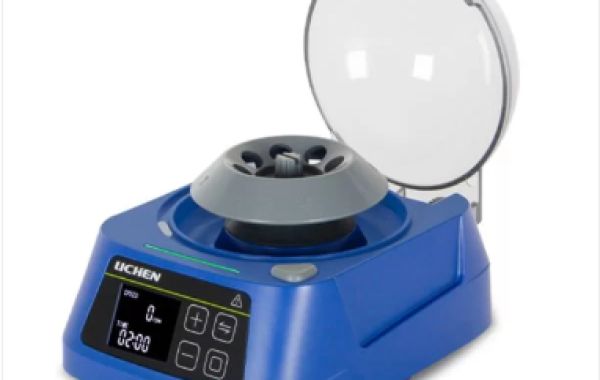Lab Centrifuge Machines Rotational Speed
Domestic lab centrifuge machines are divided into low-speed centrifuges (10000rpm/min) high-speed centrifuges (10000rpm/min a 30,000rpm/min), ultra high-speed centrifuges (30,000rpm/min) according to the maximum speed, each centrifuge has a rated maximum speed.
The maximum speed refers to the speed at no load, but the maximum speed varies depending on the rotor type and the sample mass. For example, the rated speed of a centrifuge is 16000rpm/min, which means that the rotor rotates 16000 times per minute at no load, and after adding the sample, the speed will definitely be less than 16000rpm/min. The maximum speed varies depending on the rotor, and a centrifuge can be equipped with multiple rotors, and the separation effect of a centrifuge depends mainly not on the speed but on the centrifugal force, so Sometimes the speed does not meet the requirements, as long as the centrifugal force can reach the standard is also the same, the experiment can achieve the desired effect.
Lab Centrifuge Machines Capacity
The number of sample tubes to be centrifuged at a time and the volume required for each sample tube determines the total capacity of a centrifuge.
In simple terms, the total capacity of the centrifuge = capacity of each tube x number of tubes, the total capacity, and the size of the workload are matched.
Lab Centrifuge Machines Rotors
The rotor of the lab centrifuge machine is divided into two main types, horizontal rotor: when running the hanging blue and the test tube is in a horizontal state, at right angles to the spindle, the sample will be concentrated in the bottom of the centrifuge tube. Angular rotor: the centrifugal vessel is at a fixed angle to the rotating shaft and the sample will be concentrated at the bottom of the tube and the side wall near the bottom. Choose a horizontal rotor if you want the sample to be concentrated at the bottom of the tube, or an angled rotor if you want the sample to be concentrated at the bottom of the tube and on the side walls near the bottom. There are also some special tests or special samples that require special rotors such as large capacity basket (mostly used in blood stations), enzyme plate rotor, slide rotor, PCR rotor, test tube rack rotor, and capillary rotor. The rotor has fixed specifications, it is combined with the capacity of the centrifuge, such as a 36 × 5ml angle rotor, both determines the type of rotor also determines the capacity of the centrifuge, in addition, the rotor material is also divided into engineering plastic, stainless steel, aluminum, titanium alloy, and other materials, the selection of different materials directly determines the price of the rotor, speed and service life, so the choice of the rotor is very important.
Lab Centrifuge Machines Control System
Lab centrifuge machines are equipped with microcomputer control systems that not only ensure the safe operation of the centrifuge but also automatically complete the work tasks. Nowadays, many centrifuges have better-humanized control systems. For example rotor identification function, safety lock function, automatic balancing function, fault indication function, acceleration and deceleration curve, and so on. In addition to the above points also pay attention to some details and necessary accessories.








